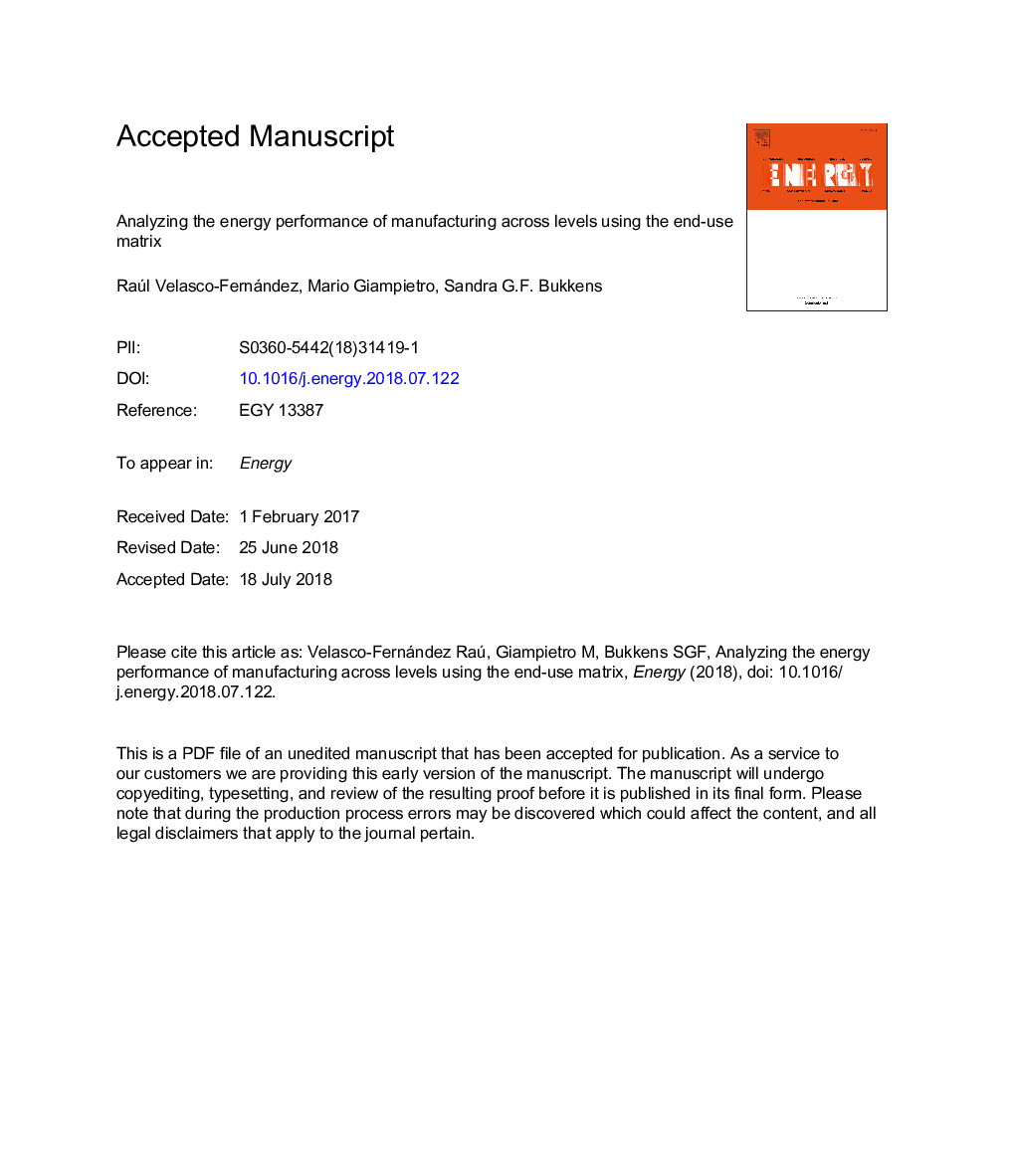| کد مقاله | کد نشریه | سال انتشار | مقاله انگلیسی | نسخه تمام متن |
|---|---|---|---|---|
| 8070872 | 1521389 | 2018 | 44 صفحه PDF | دانلود رایگان |
عنوان انگلیسی مقاله ISI
Analyzing the energy performance of manufacturing across levels using the end-use matrix
ترجمه فارسی عنوان
تجزیه و تحلیل عملکرد انرژی تولید در سطوح با استفاده از ماتریس استفاده نهایی
دانلود مقاله + سفارش ترجمه
دانلود مقاله ISI انگلیسی
رایگان برای ایرانیان
کلمات کلیدی
ترجمه چکیده
در متن استفاده از بحث برانگیز از شدت انرژی مفهوم برای ارزیابی عملکرد ملی انرژی، این مقاله یک چارچوب حسابداری نوآورانه ارائه می دهد: ماتریس پایان انرژی استفاده می شود. این ابزار یکپارچه ارزیابی کمی از مصرف انرژی بخش های مختلف تشکیل دهنده سیستم های اجتماعی-اقتصادی است. به طور خاص، آن را شناسایی می کند، در حال حرکت در سطح تجزیه و تحلیل، چه محفظه ها (یا زیر بخش ها) استفاده از نوع نوع از حامل انرژی برای نوع استفاده از پایان است. این تجزیه و تحلیل با ارزیابی نیازهای کار و جریانهای ارزش افزوده همراه است. بنابراین ماتریس استفاده نهایی به صورت یکپارچه ارزیابی های کمی را در ابعاد مختلف و مقیاس سلسله مراتبی ادغام می کند و توسعه مجموعه های یکپارچه از شاخص ها را آسان می کند. به این ترتیب، آن را به ویژگی های چند معیاره از عملکرد انرژی ملی یا بخش بندی کمک می کند. این ابزار با تجزیه و تحلیل سه کشور اروپایی: بلغارستان، فنلاند و اسپانیا نشان داده شده است. چالش هایی برای بهبود سودمندی تجزیه و تحلیل بیوفیزیکی کارایی بخش صنعت مشخص و مورد بحث قرار گرفته است. افزایش قدرت تبعیض آمیز تجزیه و تحلیل کمی از طریق استاندارد سازی اطلاعات بهتر توسط دفاتر آماری، چالش عمده ای است.
موضوعات مرتبط
مهندسی و علوم پایه
مهندسی انرژی
انرژی (عمومی)
چکیده انگلیسی
Within the context of the controversial use of the concept energy intensity to assess national energy performance, this paper proposes an innovative accounting framework: the energy end-use matrix. This tool integrates quantitative assessments of energy use of the various constituent compartments of socio-economic systems. More specifically it identifies, moving across levels of analysis, what compartments (or sub-compartments) are using what type of energy carriers for what type of end-use. This analysis is integrated with an assessment of labor requirements and the associated flows of value added. The end-use matrix thus integrates in a coherent way quantitative assessments across different dimensions and hierarchical scales and facilitates the development of integrated sets of indicators. In this way it contributes to a multi-criteria characterization of national or sectoral energy performance. The tool is illustrated with an analysis of three EU countries: Bulgaria, Finland and Spain. Challenges to improving the usefulness of biophysical analysis of the efficiency of the industrial sector are identified and discussed. Increasing the discriminatory power of quantitative analysis through better data standardization by statistical offices is the major challenge.
ناشر
Database: Elsevier - ScienceDirect (ساینس دایرکت)
Journal: Energy - Volume 161, 15 October 2018, Pages 559-572
Journal: Energy - Volume 161, 15 October 2018, Pages 559-572
نویسندگان
Raúl Velasco-Fernández, Mario Giampietro, Sandra G.F. Bukkens,
